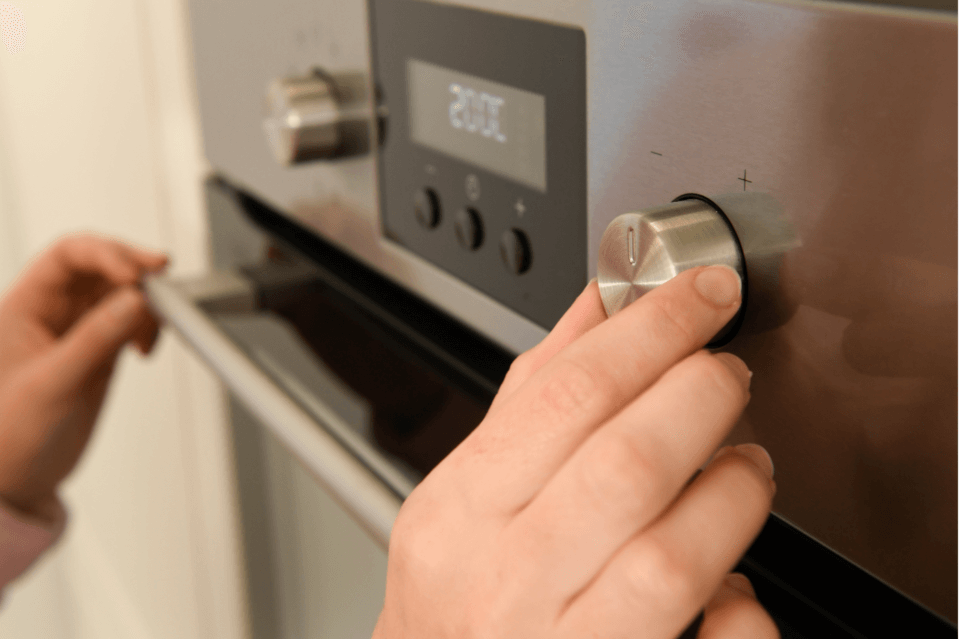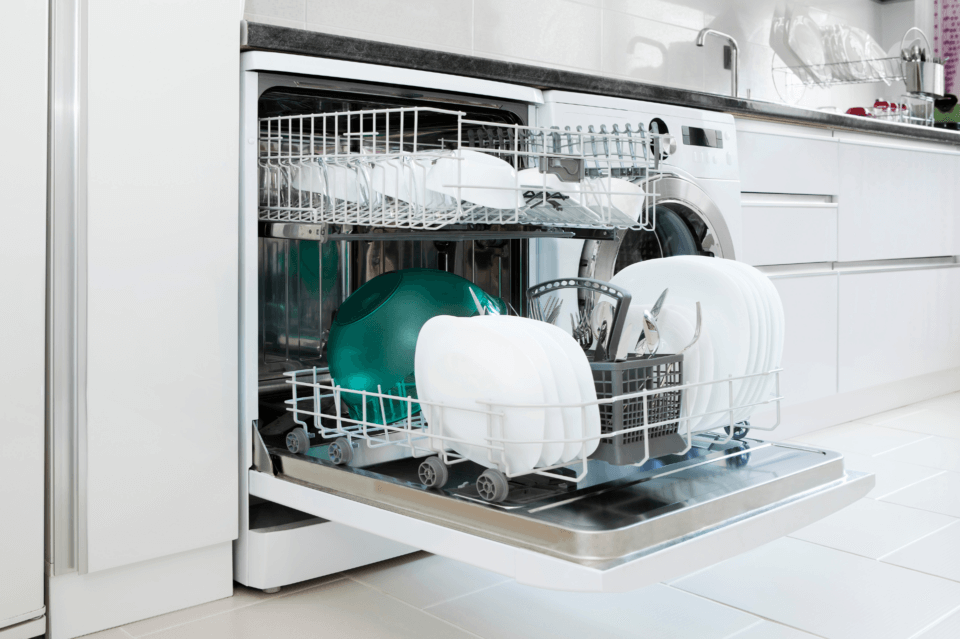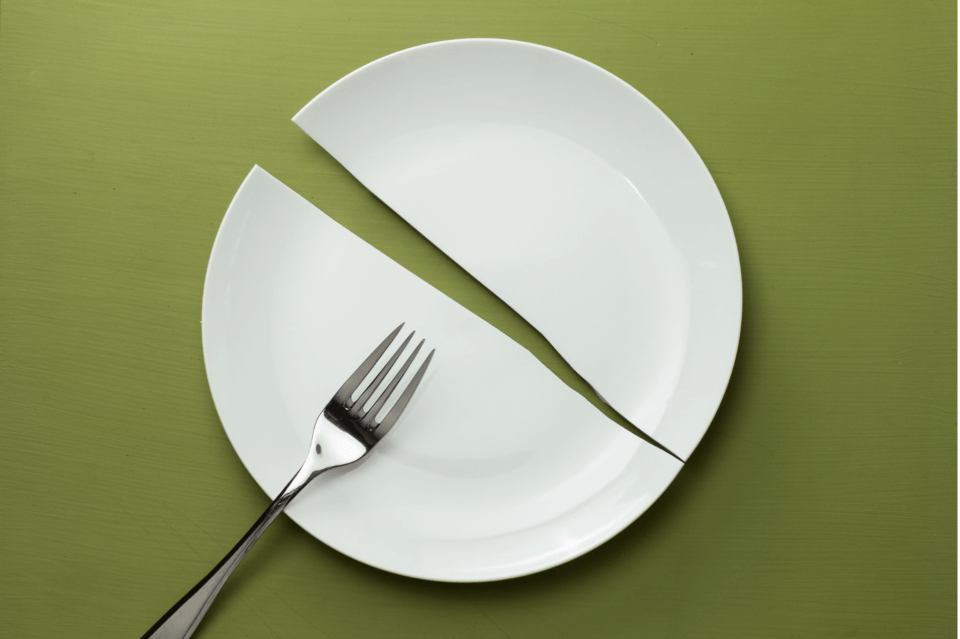Kids & Company Blog
Oh Me Oh My Melamine: Parent Safety Tips to Reduce Chemical Leaching at Home
 This blog was written by Jessica Mauricio Price, MS of the Eco-Healthy Child Care® Program of the Children’s Environmental Health Network (CEHN). Eco-Healthy Child Care® (EHCC) is a national program that partners with child care professionals to eliminate environmental hazards in early learning settings with the goal of protecting the health of children and staff. Kids & Company is a proud Eco-Healthy Child Care® endorsed provider.
This blog was written by Jessica Mauricio Price, MS of the Eco-Healthy Child Care® Program of the Children’s Environmental Health Network (CEHN). Eco-Healthy Child Care® (EHCC) is a national program that partners with child care professionals to eliminate environmental hazards in early learning settings with the goal of protecting the health of children and staff. Kids & Company is a proud Eco-Healthy Child Care® endorsed provider.
CEHN’s Eco-Healthy Mission
The Children’s Environmental Health Network (CEHN) promotes healthier environments for children, advocating for safer child care settings. The tips mentioned below are transferable to home environments, helping parents create a safer space for their children by reducing exposure to harmful chemicals like melamine. Taking steps to reduce your child’s exposure to harmful chemicals today will contribute to their overall health and well-being as they grow.
What is Melamine?
Melamine is a man-made chemical used in various products, including children’s tableware, and is a form of durable plastic resin. It does appear that melamine is useful, but is it safe for children? With certain precautions, melamine tableware can be safely used at home until preferable alternative options can be purchased. As with any plastic product, care must be taken to ensure that chemicals do not move, or leach, from the tableware to food or drinks. Here are some ways that you can reduce the amount of chemicals that may travel from your tableware into food or drinks at home:
Avoid Heating Plastic in Microwaves or Convection Ovens
Never heat any type of plastic in a microwave oven or convection oven. When a plate or cup says it is microwave-safe, it does not mean it is safe for you. It simply means the plate or cup will not melt in the microwave (i.e., it is safe for the microwave). Heating plastic or melamine plates will increase the chemicals leaching into your food or beverage. Heat damages the polymer matrix in plastic tableware, causing more chemicals to be released over time which is not safe for your family.

Avoid Putting Hot Foods or Liquids in Plastic Tableware
Placing piping hot foods on plastic or melamine tableware also increases the chemicals that can migrate into your food or beverage. It is easy to teach your children that plastic does melt in heat like in the microwave, which is bad for their health, so don’t use it for hot foods.
Avoid Putting Acidic Foods or Liquids in Plastic Tableware
Avoid placing acidic food or liquids such as tomato-based dishes and citrus juices in plastic or melamine tableware. Acid can melt plastics - like science experiments that your children may be familiar with.
Do Not Wash Plastic in Dishwashers
Over time, heating plastic in dishwashers damages it, making it easier for chemicals to leach from the tableware into food. Avoid using UV sterilization on this type of tableware as well. Remind your children that plastic and heat do not mix!

Replace Damaged Tableware
Recycle or discard plastic or melamine tableware when scratched, chipped, or warped. Once the polymers break down due to use, more chemicals will leach out. Take this opportunity to purchase safer children's tableware options, such as stainless steel, ceramics, and glass items. However, be wary of vintage ceramic pottery and glass dishes, as some may have lead paint in them.

When melamine is used with these considerations, the likelihood of chemicals moving into food at levels above known health-effect limits* can be lowered. For children with kidney function challenges, it is especially important to follow these recommendations or better yet, replace your plates with stainless steel (or glass and ceramics when the plate-throwing phase is over!).
If you found this information helpful, consider donating to the Children’s Environmental Health Network so we can continue to provide caretakers with scientific yet easy-to-read content.
This blog was written by Jessica Mauricio Price, MS of the Eco-Healthy Child Care® Program of the Children’s Environmental Health Network (CEHN). Eco-Healthy Child Care® (EHCC) is a national program that partners with child care professionals to eliminate environmental hazards in early learning settings with the goal of protecting the health of children and staff. Kids & Company is a proud Eco-Healthy Child Care® endorsed provider.
Posted on: Friday July 26th, 2024
Posted by: Kids & Company
Calgary
Calgary
Calgary
Calgary
Calgary
Edmonton
Cochrane
Red Deer
Calgary
Calgary
Okotoks
Calgary
Calgary
Calgary
Calgary
Edmonton
St. Albert
Edmonton
Edmonton
Edmonton
Edmonton
Edmonton
Edmonton
Edmonton
St. Albert
Edmonton
Edmonton
Sylvan Lake
Edmonton
Sherwood Park
Edmonton
Calgary
Edmonton
Calgary
Edmonton
Kamloops
Langley
Langley
New Westminster
North Vancouver
Richmond
Vancouver
Victoria
Victoria
Port Moody
Surrey
Surrey
Surrey
North Vancouver
Nanaimo
Surrey
Coquitlam
Burnaby
Port Coquitlam
Vancouver
Maple Ridge
Maple Ridge
Maple Ridge
Mission
Maple Ridge
Maple Ridge
Maple Ridge
Maple Ridge
Mission
Mission
Maple Ridge
Maple Ridge
Chicago
Chicago
Chicago
Chicago
Schaumburg
Chicago
Winnipeg
Abington
Canton
Quincy
West Quincy
Braintree
Braintree
Walpole
East Walpole
Brighton
Brookline
Jamaica Plain
Jamaica Plain
Cambridge
Needham
Newton Highlands
Newton
Cambridge
Boston
Randolph
Kingston
St. Peters
Lake St. Louis
Troy
O'Fallon
St. Charles
Lake St. Louis
St. Peters
O'Fallon
Howell Township
Freehold Township
Manalapan Township
Stratford
Marlton
West Deptford
Bedford
Dartmouth
Halifax
Bedford
Hammonds Plains
Lower Sackville
Eastern Passage
Avon Lake
Beachwood
Hudson
Medina
Strongsville
Cleveland
Westlake
Aurora
Burlington
Burlington
Etobicoke
Etobicoke
Hamilton
London
Milton
Mississauga
Ottawa
Richmond Hill - Corporate office (No child care services)
Toronto
Toronto
Toronto
Toronto
Toronto
Waterloo
Kanata
Oakville
Oakville
Toronto
Whitby
Toronto
Mississauga
Ottawa
Toronto
Toronto
Toronto
Brampton
Stoney Creek
Toronto
Nepean
Burlington
Burlington
Oakville
Waterdown
Oakville
Pittston
Wilkes-Barre
Exeter
Old Forge
Dover
Harrisburg
Harrisburg
Harrisburg
Hummelstown
Palmyra
York
York
York
Sweet Kiddles Avon Lake, part of the Kids & Company Family
Abington
Aurora
Sweet Kiddles Beachwood, part of the Kids & Company Family
Bedford (Dellridge Lane)
Larry Uteck (Southgate Dr)
Pine Village South End, by Kids & Company
Braintree 1
Braintree 2
Brampton
Pine Village Brighton, by Kids & Company
Pine Village Brookline, by Kids & Company
Burlington Children’s Centre
Burloak
Appleby
Beacon Hill
Brightstart Burnaby, by Kids & Company
Bow Trail
Livingston
Midlake
Millrise
Royal Oak
Britannia Crossing
Marda Loop
Evanston
Beltline
Aviation Crossing
Gulf Canada Square
Royal Oak Out of School Care and Child Care
Glendeer: New – Open for Enrollment
Pine Village Kendall Square, by Kids & Company
Pine Village Porter Square, by Kids & Company
Canton
Jackson
Lincoln Park
Harrison
West Loop
Fulton
Sweet Kiddles University Circle, part of the Kids & Company Family
Cochrane
Brightstart Coquitlam, by Kids & Company
Dartmouth
Dover
Walpole North
Eastern Passage
Ellerslie
Edmonton Ice District
Baturyn
Diamond
Friendly Frog
Meadowlark Park
St. Charles
St. Dominic
Sunshine Factory
Tamarack
Jagare Ridge
Horse Hill
Fraser
Century Park: New – Open for Enrollment
Grandview Heights
Islington
Etobicoke (Bloor & Islington)
ABC Kiddie Kampus Exeter, by Kids & Company
Apple Hill Academy Freehold by Kids & Company
Halifax
Hamilton
Hammonds Plains
Route 39
Schaffner
Swatara
Apple Hill Academy Howell by Kids & Company
Sweet Kiddles Hudson, part of the Kids & Company Family
Hummelstown
Pine Village JP Revere, by Kids & Company
Pine Village JP South Street, by Kids & Company
Kamloops
Eagleson (South Kanata)
Crayon College, by Kids & Company
Tyke Town Lake St. Louis, by Kids & Company
ABC Lake St. Louis, by Kids & Company
Kids World
Langley (200th St.)
London Richmond
Sackville
Apple Hill Academy Manalapan by Kids & Company
Little Willows 119 Avenue, by Kids & Company
Little Willows Dewdney House (Infant/Toddler and 3-5), by Kids & Company
Little Willows Dewdney Church (Preschool/OSC/3-5), by Kids & Company
Little Willows Edge, by Kids & Company
Little Willows Webster’s Corner, by Kids & Company
Little Willows Harry Hooge, by Kids & Company
Little Willows Alouette, by Kids & Company
Little Willows Silver Valley, by Kids & Company
Little Willows Whonnock, by Kids & Company
Under The Sun Marlton, part of the Kids & Company Family
Sweet Kiddles Medina, part of the Kids & Company Family
Milton
Little Willows Lougheed, by Kids & Company
Little Willows Stave Falls, by Kids & Company
Little Willows Briskham, by Kids & Company
Robert Speck Parkway
Mississauga Gateway Centre
Nanaimo
Pine Village Needham, by Kids & Company
Ottawa Barrhaven
New Westminster
Pine Village West Newton, by Kids & Company
Pine Village Newton Highlands, by Kids & Company
North Vancouver
North Van Esplanade
O’Fallon South
ABC O’Fallon, by Kids & Company
Oakville Cornwall
Oakville Dundas
Joshua Creek
Oakville West (3537 Wyecroft Rd)
Okotoks
ABC Kiddie Kampus Old Forge, by Kids & Company
Ottawa Albert
Ottawa Westboro
Palmyra
ABC Kiddie Kampus Pittston, by Kids & Company
Brightstart Port Coquitlam, by Kids & Company
Port Moody
Marina Bay
Randolph
Red Deer
Richmond
Head Office
Schaumburg
Sherwood Park
St. Albert North
St. Albert Grandin
ABC St. Charles, by Kids & Company
Tyke Town St. Peters, by Kids & Company
ABC St. Peters, by Kids & Company
Stoney Creek
Under The Sun Stratford, part of the Kids & Company Family
Sweet Kiddles Strongsville, part of the Kids & Company Family
Morgan Crossing
Surrey Professional Centre
King George
Brightstart Cloverdale, by Kids & Company
Sylvan Lake
Bloor Christie
Bloor (Bloor St. East)
Consumers
Finch
Front
Scotia Plaza
Stockyards
St. Andrew’s Church
Liberty Village
Rosedale
Queen West
Tyke Town Troy, by Kids & Company
Vancouver West
Cambie
Langford
Victoria
Walpole South
Waterdown
Tech Town
Under The Sun West Deptford, part of the Kids & Company Family
West Quincy
Sweet Kiddles Westlake, part of the Kids & Company Family
Whitby
ABC Kiddie Kampus East Mountain, by Kids & Company
Winnipeg
West York
Queen Street
Keystone Early Learning Academy, part of the Kids & Company Family
Calgary
Calgary
Calgary
Calgary
Calgary
Edmonton
Cochrane
Red Deer
Calgary
Calgary
Okotoks
Calgary
Calgary
Calgary
Calgary
Edmonton
St. Albert
Edmonton
Edmonton
Edmonton
Edmonton
Edmonton
Edmonton
Edmonton
St. Albert
Edmonton
Edmonton
Sylvan Lake
Edmonton
Sherwood Park
Edmonton
Calgary
Edmonton
Calgary
Edmonton
Kamloops
Langley
Langley
New Westminster
North Vancouver
Richmond
Vancouver
Victoria
Victoria
Port Moody
Surrey
Surrey
Surrey
North Vancouver
Nanaimo
Surrey
Coquitlam
Burnaby
Port Coquitlam
Vancouver
Maple Ridge
Maple Ridge
Maple Ridge
Mission
Maple Ridge
Maple Ridge
Maple Ridge
Maple Ridge
Mission
Mission
Maple Ridge
Maple Ridge
Chicago
Chicago
Chicago
Chicago
Schaumburg
Chicago
Winnipeg
Abington
Canton
Quincy
West Quincy
Braintree
Braintree
Walpole
East Walpole
Brighton
Brookline
Jamaica Plain
Jamaica Plain
Cambridge
Needham
Newton Highlands
Newton
Cambridge
Boston
Randolph
Kingston
St. Peters
Lake St. Louis
Troy
O'Fallon
St. Charles
Lake St. Louis
St. Peters
O'Fallon
Howell Township
Freehold Township
Manalapan Township
Stratford
Marlton
West Deptford
Bedford
Dartmouth
Halifax
Bedford
Hammonds Plains
Lower Sackville
Eastern Passage
Avon Lake
Beachwood
Hudson
Medina
Strongsville
Cleveland
Westlake
Aurora
Burlington
Burlington
Etobicoke
Etobicoke
Hamilton
London
Milton
Mississauga
Ottawa
Richmond Hill - Corporate office (No child care services)
Toronto
Toronto
Toronto
Toronto
Toronto
Waterloo
Kanata
Oakville
Oakville
Toronto
Whitby
Toronto
Mississauga
Ottawa
Toronto
Toronto
Toronto
Brampton
Stoney Creek
Toronto
Nepean
Burlington
Burlington
Oakville
Waterdown
Oakville
Pittston
Wilkes-Barre
Exeter
Old Forge
Dover
Harrisburg
Harrisburg
Harrisburg
Hummelstown
Palmyra
York
York
York
Sweet Kiddles Avon Lake, part of the Kids & Company Family
Abington
Aurora
Sweet Kiddles Beachwood, part of the Kids & Company Family
Bedford (Dellridge Lane)
Larry Uteck (Southgate Dr)
Pine Village South End, by Kids & Company
Braintree 1
Braintree 2
Brampton
Pine Village Brighton, by Kids & Company
Pine Village Brookline, by Kids & Company
Burlington Children’s Centre
Burloak
Appleby
Beacon Hill
Brightstart Burnaby, by Kids & Company
Bow Trail
Livingston
Midlake
Millrise
Royal Oak
Britannia Crossing
Marda Loop
Evanston
Beltline
Aviation Crossing
Gulf Canada Square
Royal Oak Out of School Care and Child Care
Glendeer: New – Open for Enrollment
Pine Village Kendall Square, by Kids & Company
Pine Village Porter Square, by Kids & Company
Canton
Jackson
Lincoln Park
Harrison
West Loop
Fulton
Sweet Kiddles University Circle, part of the Kids & Company Family
Cochrane
Brightstart Coquitlam, by Kids & Company
Dartmouth
Dover
Walpole North
Eastern Passage
Ellerslie
Edmonton Ice District
Baturyn
Diamond
Friendly Frog
Meadowlark Park
St. Charles
St. Dominic
Sunshine Factory
Tamarack
Jagare Ridge
Horse Hill
Fraser
Century Park: New – Open for Enrollment
Grandview Heights
Islington
Etobicoke (Bloor & Islington)
ABC Kiddie Kampus Exeter, by Kids & Company
Apple Hill Academy Freehold by Kids & Company
Halifax
Hamilton
Hammonds Plains
Route 39
Schaffner
Swatara
Apple Hill Academy Howell by Kids & Company
Sweet Kiddles Hudson, part of the Kids & Company Family
Hummelstown
Pine Village JP Revere, by Kids & Company
Pine Village JP South Street, by Kids & Company
Kamloops
Eagleson (South Kanata)
Crayon College, by Kids & Company
Tyke Town Lake St. Louis, by Kids & Company
ABC Lake St. Louis, by Kids & Company
Kids World
Langley (200th St.)
London Richmond
Sackville
Apple Hill Academy Manalapan by Kids & Company
Little Willows 119 Avenue, by Kids & Company
Little Willows Dewdney House (Infant/Toddler and 3-5), by Kids & Company
Little Willows Dewdney Church (Preschool/OSC/3-5), by Kids & Company
Little Willows Edge, by Kids & Company
Little Willows Webster’s Corner, by Kids & Company
Little Willows Harry Hooge, by Kids & Company
Little Willows Alouette, by Kids & Company
Little Willows Silver Valley, by Kids & Company
Little Willows Whonnock, by Kids & Company
Under The Sun Marlton, part of the Kids & Company Family
Sweet Kiddles Medina, part of the Kids & Company Family
Milton
Little Willows Lougheed, by Kids & Company
Little Willows Stave Falls, by Kids & Company
Little Willows Briskham, by Kids & Company
Robert Speck Parkway
Mississauga Gateway Centre
Nanaimo
Pine Village Needham, by Kids & Company
Ottawa Barrhaven
New Westminster
Pine Village West Newton, by Kids & Company
Pine Village Newton Highlands, by Kids & Company
North Vancouver
North Van Esplanade
O’Fallon South
ABC O’Fallon, by Kids & Company
Oakville Cornwall
Oakville Dundas
Joshua Creek
Oakville West (3537 Wyecroft Rd)
Okotoks
ABC Kiddie Kampus Old Forge, by Kids & Company
Ottawa Albert
Ottawa Westboro
Palmyra
ABC Kiddie Kampus Pittston, by Kids & Company
Brightstart Port Coquitlam, by Kids & Company
Port Moody
Marina Bay
Randolph
Red Deer
Richmond
Head Office
Schaumburg
Sherwood Park
St. Albert North
St. Albert Grandin
ABC St. Charles, by Kids & Company
Tyke Town St. Peters, by Kids & Company
ABC St. Peters, by Kids & Company
Stoney Creek
Under The Sun Stratford, part of the Kids & Company Family
Sweet Kiddles Strongsville, part of the Kids & Company Family
Morgan Crossing
Surrey Professional Centre
King George
Brightstart Cloverdale, by Kids & Company
Sylvan Lake
Bloor Christie
Bloor (Bloor St. East)
Consumers
Finch
Front
Scotia Plaza
Stockyards
St. Andrew’s Church
Liberty Village
Rosedale
Queen West
Tyke Town Troy, by Kids & Company
Vancouver West
Cambie
Langford
Victoria
Walpole South
Waterdown
Tech Town
Under The Sun West Deptford, part of the Kids & Company Family
West Quincy
Sweet Kiddles Westlake, part of the Kids & Company Family
Whitby
ABC Kiddie Kampus East Mountain, by Kids & Company
Winnipeg
West York
Queen Street
Keystone Early Learning Academy, part of the Kids & Company Family
 This blog was written by Jessica Mauricio Price, MS of the Eco-Healthy Child Care® Program of the Children’s Environmental Health Network (CEHN). Eco-Healthy Child Care® (EHCC) is a national program that partners with child care professionals to eliminate environmental hazards in early learning settings with the goal of protecting the health of children and staff. Kids & Company is a proud Eco-Healthy Child Care® endorsed provider.
This blog was written by Jessica Mauricio Price, MS of the Eco-Healthy Child Care® Program of the Children’s Environmental Health Network (CEHN). Eco-Healthy Child Care® (EHCC) is a national program that partners with child care professionals to eliminate environmental hazards in early learning settings with the goal of protecting the health of children and staff. Kids & Company is a proud Eco-Healthy Child Care® endorsed provider.



